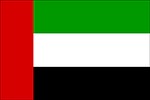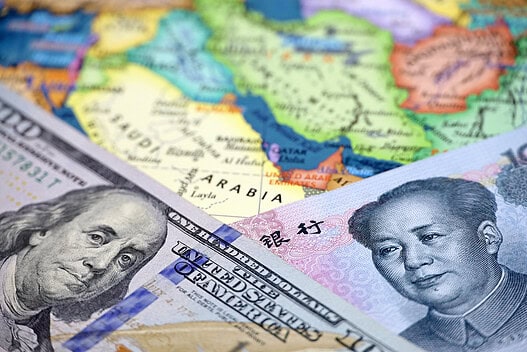Includes historical data for the United Arab Emirate’s Gross Domestic Product growth, debt-to-GDP ratio and more, as well as information on trade, banking and financial sector leadership.
A Regional Trade And Investment Hub
A key trade and investment hub for the Middle East, North Africa, and South Asia, the UAE’s economy benefits from its political and economic stability, excellent infrastructure and sophisticated financial services.
While it owes much of its prosperity to its vast reserves of oil and natural gas, which account for about 30% of the gross domestic product, the Gulf state is actively taking steps to lessen its reliance on hydrocarbon revenues by fostering development through clean and renewable energy technologies. It notwithstanding remains vulnerable to oil price fluctuations. Regional challenges to its trade hub status, a high dependence on foreign labor (with over 80% of the population being foreign) and the concentration of the workforce in the public sector are other areas of concern.
Macroeconomy & Sovereign Data
| Type of Government | Constitutional federation |
|---|---|
| Capital | Abu Dhabi |
| Sovereign Ratings |
S&P: AA Moody’s: Aa2 Fitch Ratings: AA– |
| Total Population | 11.083 million |
| Median Age | 31.6 |
| Adult Per Capita Income (PPP) | 90,448.3 |
| Total GDP (2024) | 537.079 billion |
United Arab Emirates GDP & Economic Overview
Most Recent Content
The United Arab Emirates
Banking & Finance
Trade & Investment
| Total Exports | USD 367.67 billion (2024) |
|---|---|
| Leading Exports |
Crude Petroleum Refined Petroleum Gold Broadcasting Equipment Natural Gas |
| Total Imports | USD 469.32 billion (2024) |
| Leading Imports |
Gold Broadcasting Equipment Refined Petroleum Diamonds Cars |
| Source: | World Integrated Trade Solution |
United Arab Emirates Leading Companies
| International Holding Company | Conglomerate, Real Estate, Industrials |
|---|---|
| First Abu Dhabi Bank | Financials |
| Emirates NBD | Financials |
| TAQA Group | Utilities |
| Etisalat | Telecommunication Services |
| Emaar Properties | Real Estate |
| Majid Al Futtaim Holding | Retail, Leisure |
| Emirates Group | Aviation |
| DP World | Logisitics |
| ADNOC | Energy |
Major Trade Partners — Import
| Unspecified | 21.28% |
|---|---|
| China | 15.98% |
| India | 6.49% |
| United States | 5.09% |
| Japan | 2.86% |
Source: World Integrated Trade Solution
Major Trade Partners — Export
| Unspecified | 49.44% |
|---|---|
| Saudi Arabia | 5.45% |
| India | 4.92% |
| Iraq | 4.17% |
| United States | 2.23% |
Source: World Integrated Trade Solution
Global Finance Rankings & Awards
Data Sources:
UN World Population Prospects
World Inequality Report
S&P Global Ratings
Moody’s
Fitch Ratings
IMF Direction of Trade Statistics (DOTS)
UN Conference on Trade and Development (UNCTAD)
CIA The World Factbook
World Bank’s World Integrated Trade Solution
Forbes Global 2000







